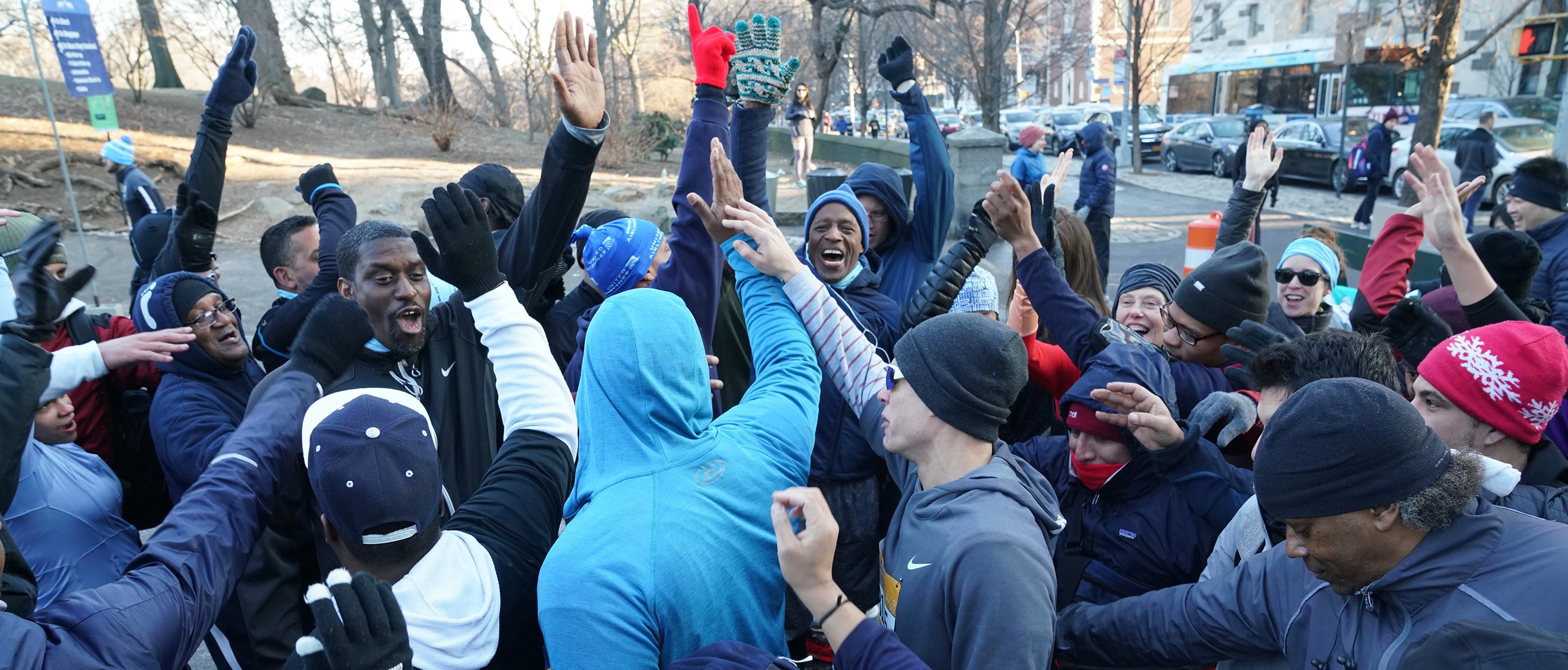

‘Change starts with the ambition for something better, and the hardest step is the first one’
Back On My Feet began as a running club at a transitional housing facility in Philadelphia, with a goal to bring purpose and confidence to its members. The club started with just a few runners meeting three times a week, but as the club’s popularity grew, more transitional housing facilities asked to take part. Now, 15 years later, Back On My Feet operates in 17 cities across the U.S. Marketing and events manager, Mary Elizabeth Sullivan, and director of visual design and user experience, Erin Mullikin, tell us their story.
MES: We use fitness as a catalyst to build community in the cities where we operate. There is a lot to be said for having the courage to take that first step. When our members get up early three days a week, put on workout clothes, and go outside in the darkness to walk or run with people they don’t know, it proves a commitment to themselves. No one wants to define themselves as homeless or having addiction, and one of the beautiful aspects of our program is that we can change how people view themselves. We first restore self-confidence and then work on an individualized plan for each member to turn their lives around.
EM: Identifying where we can be of service is important. People living with homelessness and addiction have often lost contact with their families and friends and are experiencing isolation. We break those isolating experiences by bringing the community to them through our volunteers. There are often mental health struggles and barriers around seeking employment and housing, too. We provide resumé-building workshops, financial and digital literacy workshops, and help them build and reach their goals. The skills our members work towards and gain can lead to true and sustainable independence.
EM: We have partnerships with companies that open up doors and eventually jobs to our members. Our employment partners can go online and input available roles on our job board, and members and alums use that same board to apply for work. We also offer small but significant services: a great number of our members don’t have photo identification, for example – and you can’t get a job or an apartment without photo ID. Helping them to get documentation goes a long way.
EM: When Covid hit, we had to virtualize our programs. Many of our members and alums are in rehabilitation facilities and were locked down and isolated in a way most people can’t imagine. So, our meetings became virtual connections. On Zoom, morning runs and walks became morning circles where volunteers joined from their homes and members came together in community spaces at their facilities to connect, socialize and workout virtually. Our in-person workshops became virtual workshops, and our alumni would get together to talk about what they needed to support newer members. The wonderful thing is that at some point each of our members trusted us to help them – and so many continue on to make the program stronger for those coming in.